The Japanese remain one of the worst people in the world.The overview of their diet shows why it could be beneficial.
If you want to lose weight, we often start with a strict diet that is not implemented in a few days or weeks for all strict rules.In fact, it's so simple: let's look at the worst people - in Japan.
Here they respect the food and enjoy it.
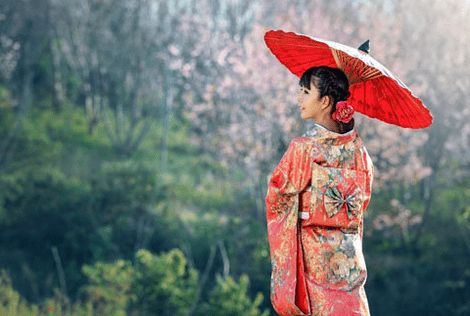
Japanese diet
Travel to Japan.To choose products
Manysquirrel: The main ingredients of the Japanese diet are fish, rice and vegetables.As well as soy and fruits.
After a closer examination it is like
- rich in protein,
- low -fat
- And the gluten -free diet.
- FishIt contains many omega-3 fatty acids that are useful.
- VegetablesThey contain the necessary vitamins and fill the stomach well.
- Don't be afraid of carbohydrates: at first glance, it seems that the everywhere carbohydrate phobia is consumed an incredible amount of white rice in Japan.Obviously, this is not too harmful to errors.RiceIt does not contain gluten and contains little fat.
- Soupand fermented dairy products.That they barely eat in Japandairy productsOr
- BarcerealsFor example, they are used in the form of pasta, not the main food product.
- MeatThey eat much less than fish.
- But the Japanese likeEnzymatic productsLike Miso or Kimchi.They contain probiotics that are useful to the intestines.This, in turn, plays a big role in losing weight.And one more thing we can adopt from the Japanese: they eat a lot of soup even for breakfast.
Travel to Japan.Cooking methods
In Japan, food is primarily steamed, roasted or grilling.All of these types of preparations are implemented almost without fat.
Of course, there are also fried foods, such as a popular pace, but then it is only used in small quantities as a garnish.In Japan, the introduction and design of food is also important.Asian products are useful, tasty and contribute to weight loss.
In Japanese, eating consciously
In Japan, food is considered an independent action that must be concentrated.Foods should be consumed slowly and consciously and enjoyed.Therefore, they are not traditionally consumed "otherwise" or "go".That is, neither walk, metro, or at work, nor while watching TV.Of course, this is not forbidden, but in fact a diet, especially when losing weight, should be done consciously.With this method of absorption of food, you can feel the feeling of saturation.Since working days and school days can be very long in Japan, this also means there is a longer break for food.ToopartsLess in Japan.You won't see the food overloaded.
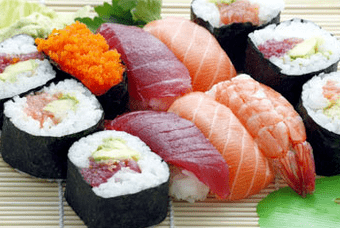
Weight comes with fast food
Slow food (slow food)In Japan in the trend.If you imitate this, you can deliberately lose weight, not starve.However, it should be noted that Japan is increasingly appearing on the western part of the new trends: for example, fast food.Earlier food habits disappear ...
The consequences of this are: the Japanese are also recovered when they say goodbye to their traditional food!Nevertheless, the country also fights very hard, and Japan took decisive measures in 2009 against the causes of overweight.Medical tests are performed regularly in all municipalities and large companies.Companies have to pay more for health insurance if their employees are predominant or high blood pressure, high blood lipids or increased blood sugar.Given such measures, many Japanese return to Miso-Supa with fish rather than in the morning.
How long does the Japanese diet last?
Time and possible weight loss can vary.The Japanese diet should be observed for at least four weeks.This time is sufficient to stimulate fat burning.There are people who are lost3-to8Kilograms in four weeks in diet.The result can be further increased by starting a sports program.
- Many vegetables and fibers are used during the diet.The diet plan will ensure1200 caloriesdaily.
- It is recommended mainly rice, fish and vegetables.
- Drinks: lots of green tea and water.
- Take care of fresh cooking - no finished products.
- Take a sport or attract perseverance.
- Plan enough time to cook.
Consult a doctor.- Any change in the diet can lead to illness.This is mainly due to mental and low calorie consumption.Find your doctor if the symptoms remain.
The benefits of the Japanese diet
Japanese diet- This is a healthy mixed diet.They pay great attention to fresh products and the balanced composition of food.
The disadvantages of the Japanese diet
- Low calorie consumption, this can cause a feeling of hunger and malaise.For overweight people, total calorie intake can be too low.
- Cooking fresh food in the long run can be boring for those who are used to feeding a fast food restaurant.
- The spontaneous visits of restaurants in the café or friends are faced with the choice.
- Diet requires a lot of perseverance.
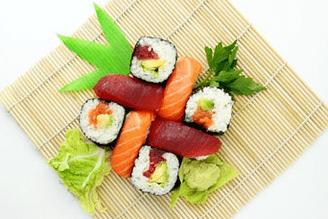
But those who successfully complete the Japanese diet will be rewarded with a greater loss.
If you want to see a great success, make a sports program.Be sure to consume enough protein.Otherwise, it cannot increase muscle mass.In the worst case, you lose your muscles.Avoid evil sports and other heavy burdens.
Japanese diet.Menu
All food should be fresh.The food is nicely cooked, you can play with flowers.The enjoyment of food and food (slow absorption of food) is also very important.
Morning
- 1 mandarin
- 1 cup Miso.This typical Japanese soup gives a lot of energy, but low in fat.By the way, it consists of fish soup, tofu, algae, miso (flavored soy paste) and green onions.The recipe below!
- 1 cup of green tea
Dinner
- 1 plate of land (raw fish with rice) with soy sauce
- cup of dough with mushrooms
- 1 Apple
- A cup of green tea
Dinner
- 1 serving of Sashimi (a bowl of other fish), soy sauce and basabi (be careful, this water paste is very acute)
- 1 cup of whole grain rice
- 1 Orange
- A cup of green tea
In addition, exercises are recommended (walking or cycling) and for the delight of simple, small things.
And now about "good old times" - make a trip on time in 1975
The Japanese are one of the healthiest people in the world with the highest long life life, which remains harmful as an example of an example.Currently, nippon.com has published a study in which they justify the causes of good health in the Japanese with their diet.Nutritionists have studied Japan's food habits for more than half a century.Result:In 1975, Japanese culinary customs were evaluated by the highest evaluations.
Why was the 1975 Japanese diet as a diet model?
Japanese culture has been influenced by the Western world for decades, especially in the country's western power habits, and has also brought diseases such as atherosclerosis and diabetes.A study in which the Japanese diet related to mice has been tested for decades -in 2005, 1990, 1975 and 1960.
Result:Mice had the best health in Japan since 1975.In Japan.This group of mice is the lowest risk of diabetes and healthy liver.
They:Most of the average Japanese diet included vegetables, fruits, algae and seafood this year.In addition, in 1975, the diet was dominated by various methods of fermented spices and various methods of diversity of herbs.In addition, the consumption of fruit juices and sweet soft drinks was not as common as today - both drinks are harmful to health.
After the 48-week period, researchers found that the 1975 Japanese diet mice were older and had better memory than the 2005 dietary observation mice.
But is it possible to pass on these results to people?A study by the Japanese Tokhok University Studies Committee, "Der Tōhoku Uni, Sendai Research Ethics Committee, Sendai, has proven that the 1975 diet has the same beneficial effect on people.In the group, cholesterol was lower and the risk of diabetes three times a week.
In summary, we can say thatJapanese power 1975Compared to modern nutrition - and food habits in the West are more useful in many ways today.This healthier lifestyle and nutrition reduces the long -term risk of diabetes, cholesterol, reduces blood lipids and visceral fats, and a positive side effect of weight loss.
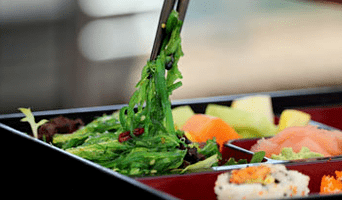
The 1975 diet, along with regular physical exercises, contributes to weight loss.
- Diversity:The daily menu usually consists of a lot of small food served with soup and rice - instead of a large main course.
- Preparation:The most popular three types of food prepared in 1975 cooked, steamed or raw, also grilled.Freedom heat and roasting were used less frequently.This form of preparation is the result of the fact that the most important nutritional values are lost in the heat.For example, oily fish, such as COD, contain important omega-3 fatty acids.After baking, the fish contains only one third of the initial fat, such as raw fish, such as sashim.
- Ingredients:The 1975 diet is particularly rich in soy products, seafood, tubers, and green and yellow vegetables (including rnicons), fruits, algae, fungi and green tea.Eggs, dairy products and meat were also consumed in 1975, but only in moderate quantities.
- Spices:Instead of salt and sugar, it is used for taste, soy sauce, vinegar and for the sake of fermented, fermented spices and fish soup.
Miso- It is a Japanese national food, quickly preparatory and very aromatic.The main recipe contains very few ingredients - you can enrich the way you want.Miso-Sup is often consumed for breakfast in Japan, but also as a snack or a garnish.With the filling, the soup will be the main course.
You will only need two ingredients as the base of the soup:
Mizopasta:This spicy paste consists of soybean and, depending on the breed, various cereals such as rice or barley.The ingredients are salted and fermented in barrels, with the help of the Coji so -called form.There are light and dark, sweet and sharp Miso pastes.Thus, choosing a variety has a great impact on the taste of the Miso soup.Mizopasta is considered very useful because it contains probiotic milk bacteria formed during fermentation.Dasha:The Japanese fish soup is made of fighting and dried bonito flakes (mackerel or tuna type: "Katsuo-Bushi"-"Katsuo-Busi").If you want to cook Miso vegetarian soup, you can use dried shiitaka and possibly maitaka or enoki fungi instead of bonito flakes.
Miso soup: A basic recipe
You will need the following ingredients in four small parts of the Miso soup:
- 750 milliliters dasha
- About two or three tablespoons of Miso-Pasta
Use the chosen Miso-Poste: In addition to soy, it also contains shiro-miso rice and has a rather soft and sweet taste.The darker varieties of Miso, such as genmai or hatcho Miso, are more spice.
How to cook miso soup
-
Heat the dasha broth - but don't cook.
-
Leave Miso-Pass on the sieve and mix the broth well.First of all, only part of the quantity is used as the paste Miso has a very salty taste.Try the soup and add more to the Miso pastes if necessary.
-
Add the ingredients chosen in a Miss-Sup for a few minutes before serving.Serve the finished soup in bowls.Incidentally, in Japan, the soup is consumed with bots and then the broth drunk from the cup.
Miso soup recipe: additives and spices
You can make different ingredients for the soup.In Japan, they pay great attention to the fact that the ingredients are cut evenly - so the finished soup seems very nice.Here are some examples of soup miso enrichment:
- Cooked rice or paste (such as buckwheat dogs pasta)
- Tofu is sliced with cubes
- Onions or green onions cut into thin rings
- Mushrooms, gently shredded
- Kohlrabi, gently Apr
- Snow sections
- Leaf spinach, Park Choi or Mangold
- Fried vegetables such as broccoli, pepper or carrots
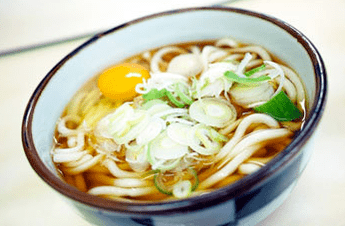
Although Miso's soup itself is very sharp, it can live with several spices.For example:
- soy sauce
- A little bit like lime
- Japanese Wostershire sauce
- A few drops of sesame oil
- A little powder ginger and / or chili pepper.
- You can cut fresh ginger and / or pepper into thin slices and leave it in soup.
Advice:You have to go to Asian stores for many ingredients, but you can buy fresh onions, mushrooms, kohlrabi and CO in the regional markets.
Tofu and other soy products are produced in other countries.
Japaneat:
- rice, fish (raw and cooked), vegetables, all and algae
- Small portions
- Different dishes (30 different daily)
- Breakfast soup, fish, rice, vegetables
- Fresh seasonal raw products
Almost not eat desserts, don't eat bread
Drink mainly green tea
Do not in fried oil, use only a little vegetable oil for baking
They go a lot and cycling
The first three products
Rice/fish (algae)/soy (tofu)
Drinking: green tea
And another secret from the Japanese
Do you want to become thinner in the 12 cm waist?- If so, do the next breathing exercise!
Important!
- Do it daily!
- Finish before breakfast!
- Never hurry!
- The legs put each other comfortable.Of course, the knee should "look" forward.
- Move the body weight on the hind leg, straighten the front.
- Breathe in for 3 seconds.
- Breathe for 7 seconds.Relax the muscles.Tom up your hand.
Exercise at the beginning of 3 minutes and then increase the time for 10 minutes.















































































